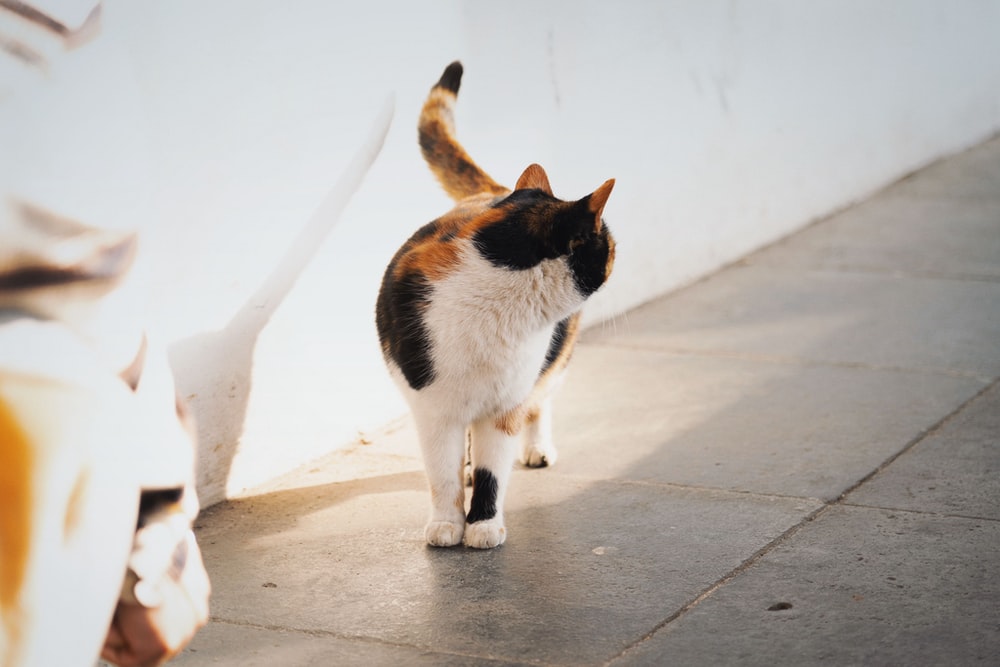Any time you suspect that your kitty is leaving blood spots at your house, you immediately worry if your baby is okay. It comes with the territory of being a pet parent.
If your sinks and floors always have spots of blood from your cat, it is not something to ignore. There are several reasons for this and we have listed them down below.
1. Flea Infestation
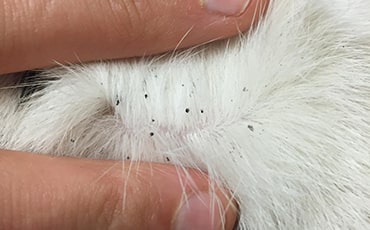
The first probable reason you notice blood spots on your sinks is because your kitty is infested with fleas. Those tiny wingless creatures produce black droppings that change into red when they come in contact with water.
See, fleas feed on your kitty’s blood. Some of it is undigested and ends up as unwanted matter or stool. These dry out and take on black color. However, in moist situations, they become red again.
One of the ways to know your kitty has fleas is to check if her fur has tiny black stuff on it. These are flea droppings that fall on the floors or sinks and appear red.
The ugly creatures burrow deep into your pet’s fur and can be hard to know of their existence. You can tell things are amiss if you notice your kitty scratching herself more than normal.
Overgrooming accompanied by constant licking, chewing, and biting can also indicate flea infestation. This often leads to bald patches and sore skin.
Thankfully, removing fleas from your kitty’s body is a straightforward process. Most pet owners use spot-on treatments to kill the bugs and keep them away for a while. You only need to apply these on the neck of the kitty and let them spread to the rest of the body to kill the fleas.
Some work in a matter of 24 hours with the effects lasting for a month or so. Other options include sprays, flea collars, injections, and tablets.
2. Urinary Attract Infections
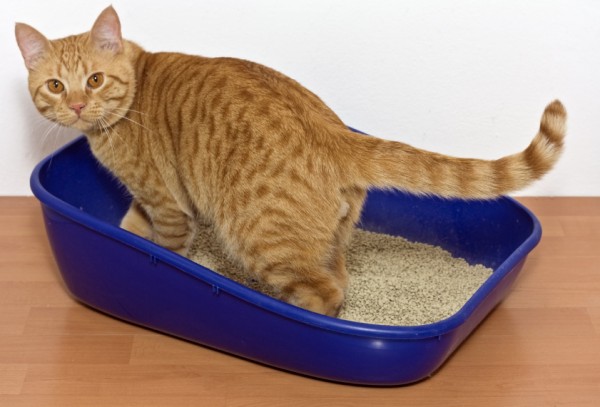
A cat that leaks blood in her urine probably suffers from a urinary tract infection. The phenomenon of blood in the urine is scientifically called hematuria. It is caused by a simple infection or disease that starts from the rest of the body and affects the kidneys or the urinary tract.
Because of the infection, cats can pee in all sorts of places including the floor and sinks leaving spots. Along with a change in the color of urine, a cat with a UTI exhibits other symptoms such as:
- Increased urination
- Increased drinking
- Strain during urination
- Stepping into the litter box and going out repeatedly
- Accidents outside the litter box
Urinary tract disease is rather difficult to diagnose as it has many causes. The only way to solve it is to bring your kitty to the vet.
Based on the symptoms displayed, the vet will do an exam and most likely run a urinalysis. This is done to assess the pH of the urine as well as the presence and concentration of crystals if any.
The tests also help to determine whether there’s bleeding, inflammation, and infection.
If the cause is not yet identified, the vet will carry out an x-ray, additional urine tests, and blood work to get to the root cause. They will then offer a treatment plan based on the findings.
3. Physical Injury
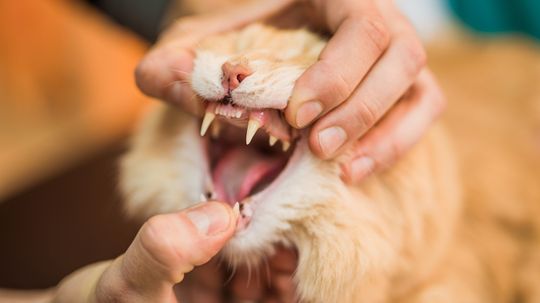
This one needs no introduction. If your kitty gets into an accident and ruptures her skin, she will certainly bleed and perhaps leaves spots of it on your floors.
Physical trauma can originate from anywhere including the mouth, ear, nose, paws, you name it.
If the bleeding is from the mouth, chances are the cat has an injury to the mouth, tongue, or teeth. It could also mean that the kitty has a foreign body lodged in her mouth, is poisoned, is experienced a rupture in her internal organs, or has gum disease.
Bleeding from the ear can be caused by scratches or hematomas on the outside of the ear. Sometimes your kitty may also has a wound caused by a catfight or a fall and which oozes blood.
Bleeding of any sort should not be taken lightly. To know if the blood spots left behind by your cat are a result of physical injury, examine her yourself to see if there’s any visible trauma.
You might also want to take a trip to the vet to ascertain that nothing is wrong internally.
4. Miscarriage
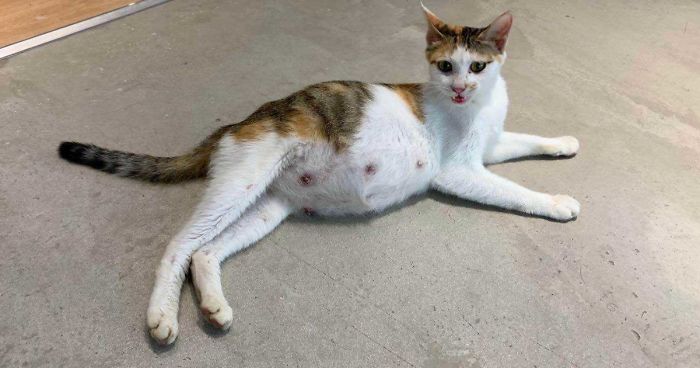
A cat that bleeds from her vulva could very well be going through a miscarriage. One of the obvious symptoms is bloody discharge.
If the kitty miscarries within her first weeks of pregnancy, her body will likely absorb the fetus. However, if the pregnancy has progressed, she will have ooze blood and exhibit dehydration, fever, delivery or a dead fetus, discomfort, and abdominal straining.
Your vet is capable of diagnosing miscarriage in your cat. They will do an x-ray and a physical exam to know what’s going and offer an ideal treatment plan.
If the fetus is still alive in the kitty’s uterus, it will need support to remain alive. If it is dead, it will need to be removed from the uterus to avoid infection.
Related Post: Do Cats Get Pregnant Every Time They Mate?
5. Tumor
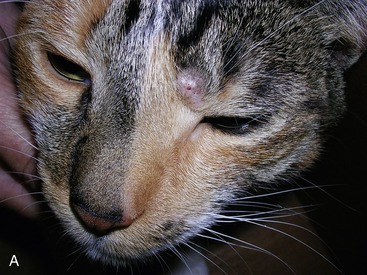
Finally, a cat that leaves blood spots on the floor/sink could be suffering from a tumor. Also called an abnormal growth of tissue, a tumor can occur pretty much anywhere in your kitty’s body.
If she has a tumor in her urinary organs, she will likely have blood spots in her urine. The same rings true for her reproductive, digestive, and renal systems.
It goes without saying that tumors are very serious, especially if they are malignant.
Along with blood spots, go to the vet if you notice difficulty eliminating, loss of appetite, sores that do not heal, change in bladder and bowel habits, difficulty eating and swallowing food, presence of lumps that change in size.
Closing Thoughts
A cat that leaves blood spots on the floor or the sink is sick or has fleas in her coat. Either way, she needs help to get rid of the issue.
Some of the cases are fatal and need intervention as soon as possible.
Even those that don’t seem serious can cause issues that will compromise your cat’s health down the line.
Your best bet is to take the kitty for a full medical checkup and you will not see blood again.

Hi! I am Eleanor Price. I started this website after my cat, Louie, almost died from a case of botulism (a type of food poisoning often caused by bacteria that grow on food items). Turned out that my cat’s diet was the problem. I have made it my duty to provide the best information and recommendations about everything cat lovers need to know about their felines’ health and wellbeing. My goal is to find the most informative content on anything feline-related and share it with fellow hardworking kitty lovers.

